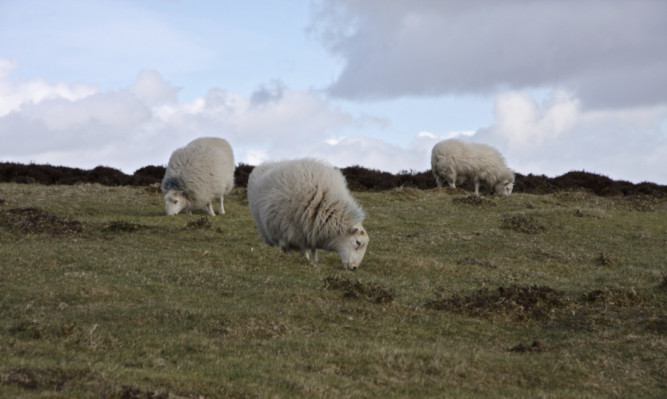An unprecedented U-turn took place on a high Borders hillside when Scotland’s sheep farming leaders lent their backing to commercial forestry in the uplands.
After generations of antipathy to planting trees on upland farms, representatives of the National Sheep Association (NSA) and the farmers union publicly agreed with foresters that integrating the two land uses made commercial sense.
The turnaround happened on Lymiecleuch farm above Teviothead in the Borders and was witnessed by representatives of Scottish Government, Forestry Commission Scotland (FCS), commercial forestry companies, consultants and academics.
Decades of blanket afforestation and the commercial planting of entire farms in some parts of the uplands turned farmers, and especially sheep producers, against combining their choice of land use with forestry.
But yesterday FCS said they wanted upland farmers across Scotland to turn 5-10% of their least productive land over to trees.
The head of FCS, Jo O’Hara, claimed that planting trees would improve sheep productivity by providing shelter, helping with handling and screening off areas that were no use for livestock farming.
And trees, she insisted, were also profitable.
“Agriculture and forestry can work side by side, that’s a no-brainer,” she said.
“But the big game changer is the new CAP. It means farmers can retain their basic payment when they plant trees on their land.
“And there are good processing facilities and a strong commercial market for timber.”
Lymiecleuch farm owner Sir Michael Strang Steel took representatives of all the organisations up to the top of the hill to show them how he has integrated 420ha of forestry onto 1,346ha of sheep grazing land.
“We’ve sited it carefully on the poorest sheep ground and the productivity of the flock has improved,” he said.
Contract farmer Ian Hepburn, who runs a flock of 1,750 cheviots on the land, said his experience of farming on Lymiecleuch had converted him to forestry.
“Sheep farmers never used to speak about trees, and that’s putting it politely,” he said.
“I’ve seen too many communities and villages disappear because of blanket forestry.
“But I’ve had a change of mind. It has to be planned carefully and strategically so that fencing is used as a perimeter for enclosures, but it can work.”
NFU Scotland (NFUS) vice-president, Rob Livesey said the union “thoroughly supported” the initiative to integrate sheep farming and forestry and the union’s policy director, Jonnie Hall, suggested it was time every farmer to “look in the mirror” to figure out how to proceed with forestry.
But not everyone was entirely on message.
NSA Scotland vice-chairman Billy Renwick questioned how tenant farmers would benefit from more plantations in the uplands, and he warned of the predator problems associated with forestry plantations.
“For farmers who are next to Forestry Commission blanket plantations, it’s a nightmare,” he said.
“Forestry Commission don’t kill foxes and leave it up to farmers.”
